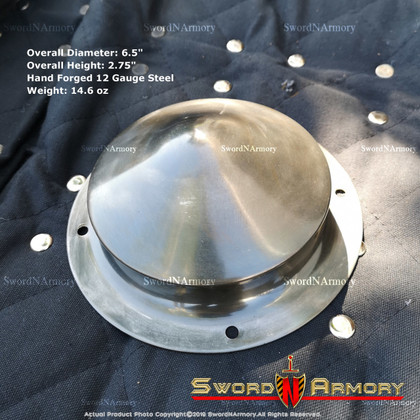Two Most Popular Types of Metal Shields Throughout History
Posted by Sword N Armory on Mar 12th 2020
Given that a "shield" is a rather broad term which refers to any piece of personal, paneled armor which's held and expressly designed to intercept incoming attacks, we'll only here be concerned with, perhaps, the two most well-known and popular types of shield through history. Also, given that most ancient shields were constructed from wood, such as "poplar", we'll concern ourselves only with shields made at least partially of metal. "Partially," is used due to the fact that almost all shields constructed of nothing but metal would be ridiculously heavy and thus, worthless in battle.
The Kite Shield
Now probably the most well-known of all shields is the Kite Shield, popularized by Hollywood tales about valiant knights combating evil and rescuing damsels in distress (though in such films the shield is generally presented in a highly stylized form). The Kite shield's first historic appearance occurs during a depiction in the Bayeux Tapestry, which showcases the Norman Conquest of England which concluded with the epic Battle of Hastings and so naturally predates it though it's exact origins remain presently unknown.
Kite shields are long and almond shaped, with a wide upper body which tapers into either pointed spike or a pointed curve. Due to the inherently unwieldy nature of the armament, they typically featured hand grips alongside arm straps to ensure that the shield would not be wrenched from one's grip during a particularly vicious battle.
The frame of a Kite Shield was typically of laminated wood which was then covered with iron sheeting and a metal boss (which was generally also fashioned from iron).
The Heater Shield
The small and compact Heater Shield (so named due to it's at a glance similarity to the bottom of a clothes iron) first began its life as a modified Kite Shield but quickly gained characteristic that were completely its own. Where the Kite Shield was large and cumbersome (typically four to three feet in length) the Heater Shield was much smaller and more mobile (though they were often just as wide, they were usually a foot or so shorter) which eventually lead to it surpassing the Kite Shield and become the mainstay defensive armament for most knights until the 14th Century.
Heater Shields just like their progenitor, featured a base structure of wood over which a thin sheeting of iron was affixed. In later models steel would replace iron in the shield's the metal sheeting. Heater shields very rarely featured a boss, whether metal or otherwise.
As you can see, these two types of metal shields are the most popular shields because of how they were used and how they're still recognized today.










